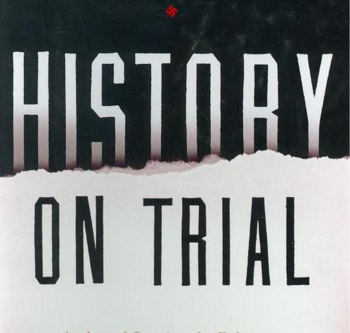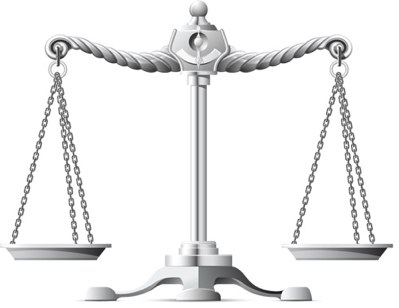JEWISH THOUGHT OF THE DAY
Playing the Odds

I’m not a betting man but I know something about “The Odds”.
For example, if I had to pick a number between one and ten, the odds against picking the right number is ten to one. One number out of five thousand, the odds are five thousand to one.
Two out of five thousand? The odds are exponentially higher.
Three out of five thousand? I begin to lose count.
Four out of five thousand and the odds are off the chart.
In other words, if someone told me that they could guess right four times out of four from a field of five thousand items, I would say they’re either crazy, a genius or very lucky.
Three thousand years ago, three-quarters of the globe remained unexplored. Nobody knew what existed in Australia, in South America, in the northernmost regions of Alaska or in the wilds of Africa.
Yet, the bible goes out of its way to state that there is only one specie of mammal, anywhere in the world, that has a split hoof but doesn’t chew its cud. And the Bible names it – it’s called the pig.
And lo and behold, the Bible is right.
Okay. Easy stuff. One out of five thousand mammals and it “guessed” right.
Then it names three other animals and says that these are the only ones in the world that DO chew their cud but DON’T have split hooves.
And lo and behold, it gets it right again.
Maybe it’s a fix. A setup. Maybe the One who wrote those lines also created all of the animals of the world so there’s nothing special about the prediction. He already knew!
Hmmmm.
Subscribe to our blog via email or RSS to get more posts like this one.
Posted in:
Commandments & Daily Living
by
Max Anteby
![]() November 27, 2012
November 27, 2012
Holocaust Denial Or Revisionism?

A revisionist or an outright liar?
That, in essence, was the question brought to one of England’s highest courts regarding the views about the Holocaust by David Irving, author of some 30 history books on World War II.
Professor Deborah Lipstadt, an American Holocaust historian, had written a book about Holocaust denial, and included Irving in her list of deniers. Irving’s reputation as an historian was at stake, he felt, and sued her in a British court for libel.
The trial had ramifications far beyond personal reputations. At stake was history itself. Irving, for instance, claimed, “There were no gas chambers in Auschwitz,” and that the mass murders of Jews in the death factories of Auschwitz, Majdanek and Treblinka was a “myth… which in fact never took place.”
His claims buttressed the battle cry of anti-Semites worldwide, from white supremacists in the West to Arab/Islamists in the Middle East, including the President of Iran.
After a long and highly publicized trial the judge issued his ruling on April 11, 2000. His conclusion was unequivocal: “[F]or his own ideological reasons [Irving] persistently and deliberately misrepresented and manipulated historical evidence…. [He was] an active Holocaust denier… anti-Semitic and racist….”
In other words, Irving was not an historian with an alternate view on the Holocaust, but an outright denier.
How did Irving have the temerity to claim there were no gas chambers at Auschwitz? Two of his points were: not enough evidence for use of Zyklon B poison gas and no holes in the roofs of the gas chambers at Auschwitz to drop in the poison pellets.
The first claim was based on the research of a German-American who went to Auschwitz and scraped some concrete from two different rooms: where Jews were gassed and where clothes were fumigated. (Zyklon B was first used to kill vermin on clothes.) A chemist found that there was a much lower level of Zyklon B in the chamber where people were killed. This indicated, the researcher (and Holocaust deniers) concluded, that Zyklon B wasn’t used against people.
However, they were wrong, because rodents are actually more resistant to the poison. Therefore, it actually took more gas to kill them than people.
Irving’s second claim, that there were no holes in the roofs, was aided by the fact that the Nazis blew up the gas chambers just before abandoning Auschwitz-Birkenau. However, a confluence of evidence proved otherwise.
First, eye-witnesses, including perpetrators (captured Nazis) and victims (e.g. Sonderkommandos), testified seeing the holes and SS soldiers dropping Zyklon B gas pellets inside. Second, architectural documentation emerged of how, for instance, the Nazis changed the Auschwitz morgue into a gas chamber, including putting in new doors that swung out and changing chutes (for sliding in dead bodies) into stairs (so people could walk down).
There is also evidence from a US reconnaissance flight over Auschwitz on August 25, 1944

which shows the Zyklon B introduction chimneys clearly visible on the roof as four dark squares staggered side to side down the length of the room.

In short, historians have a confluence of evidence to prove the existence of the gas chambers (as well as other things about the Holocaust). Of course, hardened anti-Semites are unlikely to change no matter how substantial the proof. But many people are neutral or don’t know any better. They see that David Irving wrote many books, is considered a historian, and might think his view is merely revisionist.
It is not. It is a deliberate falsification.
(Further Reading: History On Trial by Deborah Lipstadt.)
Subscribe to our blog via email or RSS to get more posts like this one.
Posted in:
Jewish Beliefs & Philosophy;
Jewish History
by
Yaakov Astor
![]() September 12, 2012
September 12, 2012
The 8th Wonder of the World

Most people are not even familiar with what the first 7 are, even though we use the expression all the time.
Actually, you have a choice.
If you prefer the “Ancient” 7 Wonders of the World, you have the Great Pyramid of Egypt, the Hanging Gardens of Babylon, which you should stop by and see next time you’re in Iraq, and of course, the ever popular Mausoleum of Halicanassus.
Don’t like the “Ancient” ones? Then you can pick from the not so ancient ones like the Taj Mahal, the Great Wall of China or the Coliseum (the one in Rome, not Los Angeles).
Of course, there’s always the 7 “Natural” Wonders such as the Grand Canyon and Mount Everest or the “Manmade” Wonders such as the Brooklyn Bridge, the Chunnel or the London Sewage System (you can’t make this stuff up).
In total, there are almost 50 different “Wonders” that have made it onto one of several official 7 Wonders lists.
But what single item should qualify as the EIGHTH Wonder of the World? Allow me to suggest a few:
1. The World - the Universe and all it contains.
2. A Newborn Child - understanding that it developed from two individual half-cells into a functioning body of 10 trillion cells at the time of birth.
3. A Fruit Seed - containing not only the billions of instructions it needs to develop roots, a tree with branches, leaves and fruit but also all of the apparatus to accomplish it.
4. Food - the fact that there are 7 billion people in the world, 90% of whom eat every day and the Earth has not run out of meat, fish, poultry, water, apples, wheat and chocolate.
5. The Human Mind - with its ability to interpolate, extrapolate, innovate, create, remember, forget, reason, control and emote.
6. E=mc2 - the formula that helped unlock one of the secrets of the Universe and changed the course of mankind and history.
7. The Higgs Boson - not because anyone really knows what it is, what it does or what it means but because it hints at the existence of a Super Being Creator Who obviously knew what He was doing all along.
8. My Children. And my Wife. Not necessarily in that order.
Wanna vote?
Subscribe to our blog via email or RSS to get more posts like this one.
Posted in:
Jewish Beliefs & Philosophy
by
Max Anteby
![]() August 16, 2012
August 16, 2012
The Cinderella Nation

“Cinderella, clean my clothes!”
“Cinderella, where’s my dress?”
“Cinderella, wash the floor. And when you finish, don’t forget to clean the cinders out of the chimney.”
Seems like there was no love lost between Cinderella and her step-mother. If she really loved her, she certainly wouldn’t have asked her to do EVERYthing. What about Drizella and Anastasia, her step-sisters? Must be step-mother loved THEM so much, she never asked them to do ANYthing.
There’s a very famous verse in Judaism that is repeated over and over again by those engrossed in their learning. It goes like this:
“God wants to reward the children of Israel so much, He increased the number of commandments.”
Given the story of Cinderella, isn’t that counter-intuitive? If God really loved us, why not just give us one or two commandment to follow? Make it easy for us to succeed? Maybe something like, “Don’t forget to brush your teeth in the morning.” I could live with that.
If that’s all it took to get a piece of candy as a reward (which is why we have to brush our teeth in the first place), life would quickly become meaningless, hum drum, pointless.
Instead, God raised the stakes. By creating a commandment for all aspects of life, even those things that we do naturally become worthy of a reward.
Eat some food, say a blessing, you get a reward.
Help an old lady cross the street, you get a reward.
Wake up in the morning and say “Thank God I’m alive”, you get a reward.
And then there’s the more esoteric things:
Don’t eat meat and milk together.
Put those strange black boxes on your arm and head six days a week.
Blow a ram’s horn once a year.
Why? I can’t tell you. But we have 613 of those. The Noahide Laws for all the other nations only contain seven commandments.
Why? The verse says God loves the Jewish people and wants to give us rewards.
As I recall, it was Cinderella who got the Prince, not her sisters.
Subscribe to our blog via email or RSS to get more posts like this one.
Posted in:
Jewish Beliefs & Philosophy
by
Max Anteby
![]() July 25, 2012
July 25, 2012
Isn’t The Death Penalty Barbaric?

QUESTION: Isn’t the death penalty barbaric and wrong? Why then does it exist in the Torah?
ANSWER: Forty years before the Temple was destroyed, almost 2000 years ago, Jewish courts voluntarily stripped themselves of the ability to judge all cases of possible capital punishment. Even before that time, the circumstances were so narrowly defined that the Talmud tells us that a court that put someone to death once in 70 years was a “bloody court.”
Just to provide a glimpse how difficult it was to put someone to death according to Jewish law: The person about to commit the act had to be verbally warned beforehand by two proper witnesses who say, “Are you aware that the act you are about to do incurs the death penalty?” And then they had to specify the correct death penalty.
Next, the perpetrator had to reply, “Yes, I understand committing this act is deserving of such-and-such death penalty, but I will do it anyway.”
Without that verbal warning and without that verbal acknowledgement there were no grounds for the death penalty.
And if those who did the warning warned the perpetrator with the incorrect type of death penalty the case was thrown out.
In addition, the witnesses could not be related to each other, could not be gamblers, could never have ever even lifted a hand against a fellow Jew. Plus, there were other factors that could have disqualified them as proper witnesses.
Furthermore, these witnesses were interrogated before the trial. If either of them slipped up in or forgot any detail the case would be thrown out.
Some of the greatest Talmudic sages said that if they had been on the court that put someone to death, their interrogating ability would have meant that no person would have ever been put to death. So, execution by a Jewish court was exceedingly rare.
Why have the law to begin with? It’s important to have it on the books, if for no other reason, than to let people know the severity of the act. Society has to protect its citizens, and part of it is a court system that brings the guilty to justice. However, if a human court cannot convict, for whatever reasons, nevertheless let the gravity of the crime be known.
Of course, in Judaism, if a person is guilty of something that a human court does not have the jurisdiction to carry out a punishment against, justice will in the Jewish viewpoint be served via the “heavenly court” in some way, shape or form, sooner or later. And in many ways – spiritually and perhaps even physically—that is worse.
Contrast this with the American system. In 1992, the Innocence Project was established in the wake of a landmark study which found that incorrect identification by eyewitnesses was a factor in over 70% of wrongful convictions! Over the next 20 years, the Innocence Project freed 292 wrongfully convicted felons, including 17 who spent time on death row.
Those statistics would never happen under Jewish law. The Torah would rather have a guilty man walk than punish an innocent one. Of course, Judaism believes that even if someone wrongfully gets off they aren’t really getting off, because there is a God who keeps the records and will even out all the ledgers. Nevertheless, while the human court is empowered to do what it can to insure justice to the best of its ability the limitations put upon it by the Torah added extra layers of protection for the innocent.
Subscribe to our blog via email or RSS to get more posts like this one.
Posted in:
Jewish Beliefs & Philosophy
by
Yaakov Astor
![]() July 11, 2012
July 11, 2012
A Little Milk, Two Sugars

That’s the way most people drink their coffee – not too weak not too strong. But when you need to stay awake before or after a trying day, many people take their coffee black - straight up, nothing added.
As youngsters, we make it so weak all that is left is the flavor of coffee, sometimes you can’t even tell that it’s coffee. How do we do that? It’s all in the milk- the more you add, the more diluted the coffee.
The land of Israel is bounded by three bodies of water – the Mediterranean, Lake Kinneret (also known as the Sea of Galilee) and the Dead Sea.
The Mediterranean is one of the seven seas that envelop the earth. The Kinneret is land locked – it gets its water from the rain that flows into it from its tributaries. The Kinneret provides the life giving water that is used by Israel and its neighbors. The overflow empties into the famous Jordan, known since Biblical times as the river that separates Israel from its eastern neighbor of the same name.
The Jordan empties into the Dead Sea.
The Dead Sea is just that. Dead. It has the highest concentration of salt of any sea in the world. It does not and cannot support life. Not fish. Not fauna. Not human.
So here’s the thing.
When you add more milk to the coffee, eventually the coffee taste disappears and its all milk. Why is it that sparkling, clear water has been flowing into the Dead Sea for thousands of years (or millions if you prefer) and yet – it’s still dead? Why didn’t it lose its “taste” of salt?
Leave it to the Holy Land to provide us with a holy lesson.
The Kinneret receives from others and gives to others. It is sweet and life-giving. The Dead Sea only receives. It has no outlet. It never gives of itself. Hence the name – the DEAD Sea.
When you give, you’re alive. When you don’t then, well, maybe it’s time to wake up and smell the coffee.
Subscribe to our blog via email or RSS to get more posts like this one.
Posted in:
by
Max Anteby
![]() June 27, 2012
June 27, 2012
Wings

The word “renaissance” comes from the French word for rebirth. It is usually used to refer to that period of time approximately 600 years ago when mankind freed itself from the restrictive policies of the church and began a new generation of ideas and innovation.
It is therefore used to describe any instance when something begins anew.
One of the more repugnant creatures of the world is the caterpillar (especially if they’ve started oozing out after you’ve stepped on it). Yet one of the most beautiful and mystifying creatures is the bright and brilliant butterfly. They are intimately connected by the word “renaissance” in the truest sense of the word.
Let’s see what happens inside that cocoon.
First our little friend, the caterpillar, eats as much as he can so that there’s plenty of “body” inside his furry skin. When he’s just about had enough to eat, he (or she) finds a quiet place where it won’t be disturbed. Some produce cocoons, others park themselves under a leaf. Then the magic begins.
The caterpillar begins to digest itself using the same juices it used to digest its food (sort of like your stomach digesting your intestines). When most of its body has been consumed in what you might call a larval near death experience, it begins to regenerate itself. It has shed its skin in preparation for the development of a leaner, thinner body and its colorful wings. It then pumps blood (yes, insect blood) into its wings and emerges from its slumber in the most dazzling-colored rebirth in nature.
Question is – why would God create a creature that has to die only to be reborn as something completely different?
Perhaps we can find the answer lies in the purpose of Creation.
We are here in this world to ingest good deeds (mitzvoth) into our bodies and souls, whether they are between man and our fellow man or between us and God. After we die our natural death, these deeds reconstitute our physical beings into the wings of our heavenly spirits and we experience the renaissance of the soul.
The more mitzvoth we’ve ingested, the more magnificent it’s wings.
Subscribe to our blog via email or RSS to get more posts like this one.
Posted in:
Jewish Beliefs & Philosophy
by
Max Anteby
![]() June 22, 2012
June 22, 2012


